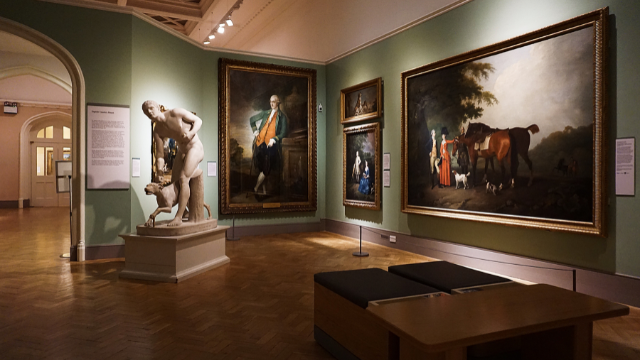Discover what makes a museum visit truly unforgettable. From ancient artifacts to interactive displays, museums offer a diverse range of experiences for all ages. Explore the magic of art galleries, the history of artifacts, and the excitement of hands-on activities. Uncover the mysteries behind museum treasures, learn about different museum types, and dive into the world of museum careers. Whether you’re a history buff, a science enthusiast, or an art lover, museums have something special just for you.
Unique Museum Artifacts
Discover the rarity of museum artifacts. When you step into a museum, you encounter a world filled with rare artifacts, cultural relics, historical treasures, unusual exhibits, and ancient artifacts. These items hold immense value, not just in monetary terms but in the stories they carry from the past. Museums carefully curate these pieces to offer visitors a glimpse into different eras and civilizations. Each artifact has a tale to tell, whether it’s a centuries-old coin, a beautifully crafted piece of pottery, or a unique relic from a long-lost civilization. As you explore these treasures, you can’t help but marvel at the craftsmanship and history behind each item. The connection to our ancestors and the sense of awe that these artifacts evoke make them truly special. So next time you visit a museum, take a moment to appreciate the significance of these rare and precious objects that have stood the test of time.
Interactive Exhibits
In a museum, interactive exhibits engage visitors through hands-on experiences and immersive activities. Hands-on activities allow you to touch, manipulate, and explore different elements, enhancing your understanding of the subject matter. Virtual engagement brings a new dimension to interactive learning, enabling you to delve into simulations and virtual environments. Through interactive exhibits, you actively participate in educational experiences, making the learning process dynamic and engaging. Visitor participation is key in these exhibits, as your involvement contributes to a richer and more memorable museum visit.
Interactive exhibits cater to various learning styles, offering a blend of entertainment and education. They encourage exploration, critical thinking, and problem-solving skills. By actively engaging with the exhibits, you can deepen your understanding of historical events, scientific concepts, artistic techniques, and more. These hands-on experiences create a unique opportunity for you to interact with museum content in a meaningful way, fostering curiosity and a love for learning.
Diverse Museum Themes
When exploring museums, you’ll encounter a wide array of diverse themes that cater to various interests and preferences. Museums provide a platform for cultural diversity, historical artifacts, hands-on activities, immersive learning experiences, and nature exploration. Here is a table showcasing the emotional impact of these themes:
| Theme | Emotional Impact |
|---|---|
| Cultural Diversity | Appreciation of different cultures and traditions |
| Historical Artifacts | Connection to the past and understanding of history |
| Hands-on Activities | Engagement and interactive learning opportunities |
| Immersive Learning | Deep understanding through interactive and sensory experiences |
| Nature Exploration | Awe and appreciation for the natural world and its wonders |
Each theme offers a unique chance to connect with the museum’s content in a meaningful way, making your visit a memorable and enriching experience. Whether you prefer diving into history, exploring different cultures, engaging in hands-on activities, immersing yourself in learning, or marveling at the beauty of nature, museums have something for everyone.
Engaging Visitor Experiences
Explore five key elements that create engaging experiences for you as a visitor in a museum.
- Visitor engagement
- Interactive displays and multimedia experiences enhance your connection with the exhibits.
- Engaging with knowledgeable staff and volunteers adds depth to your museum visit.
- Hands-on activities
- Participating in workshops or touch stations allows you to interact with the displays.
- Creating art or handling artifacts provides a tactile learning experience.
Immerse yourself in nature exhibits that showcase the beauty and diversity of the natural world. Discover the wonders of space exploration through interactive exhibits that transport you beyond Earth. Additionally, explore career opportunities within museums, such as becoming a curator or a docent, to deepen your involvement in the museum field. By engaging with these elements, you can make the most of your museum visit and create lasting memories.
Educational Resources
Engage regularly with educational resources in museums to enhance your learning experience and deepen your understanding of the exhibits. Take advantage of virtual tours to explore museums from anywhere, immersing yourself in different cultures and historical periods. Participating in hands-on activities can make learning more interactive and memorable, allowing you to connect with the artifacts on a deeper level.
Consider creating time capsules inspired by museum visits, preserving your own memories and experiences for the future. Explore museum careers by learning about roles like curators and docents, gaining insights into the behind-the-scenes work that brings exhibits to life. Additionally, don’t forget the value of local exploration; researching and visiting nearby museums can offer unique insights into your community’s history and culture. By actively engaging with these educational resources, you can make the most of your museum visits and broaden your knowledge in diverse and exciting ways.
Art Appreciation Insights
Appreciating art enhances cultural understanding and fosters creativity. When exploring art in museums, consider the following insights:
- Art Interpretation
- Engage with the artwork’s themes, messages, and historical context.
- Analyze the techniques and styles used by the artists to convey their ideas.
- Creative Expressions
- Appreciate the artist’s unique perspective and personal expression.
- Reflect on how art allows for diverse interpretations and emotional connections.
Art museums offer more than just visual stimuli; they are gateways to a world of creative expressions, visual storytelling, symbolic meanings, and aesthetic appreciation. By delving into art interpretation, you uncover layers of significance within each piece. Embrace the opportunity to explore the depths of artistic expression, understand the narratives woven through visual storytelling, decipher the symbolic meanings behind each stroke, and cultivate a profound aesthetic appreciation for the artistry before you.
Statue Symbolism Exploration
Delve into the symbolism of statues within museums to uncover hidden meanings and cultural significance. When exploring these statues, consider their cultural significance, historical context, and artistic interpretation. Symbolism exploration allows for a deeper understanding of the messages conveyed through these sculptures. By analyzing the statues, you can unravel the stories they represent and the values they hold within a specific culture or time period.
Cultural significance plays a vital role in statue symbolism, reflecting the beliefs and traditions of a society. Historical context provides insight into the circumstances surrounding the creation of these statues, shedding light on the events that influenced their design. Artistic interpretation adds another layer of complexity, showcasing the creativity and skill of the sculptors who brought these statues to life. Sculpture analysis offers a comprehensive look at the form, materials used, and techniques employed, enhancing the appreciation of these artistic masterpieces. Explore the statues in museums with a keen eye for detail, and you will uncover a wealth of symbolic meaning waiting to be discovered.
Archaeological Displays
Explore the depth of history through the intriguing archaeological displays found in museums.
- Delve into Ancient Artifacts
- Witness the craftsmanship and ingenuity of civilizations long past.
- Gain insight into the daily lives and beliefs of ancient peoples.
- Unearth Prehistoric Relics
- Encounter remnants of societies dating back thousands of years.
- Marvel at the preservation of tools, art, and structures from ancient eras.
These displays not only showcase excavation discoveries but also preserve cultural heritage through the presentation of prehistoric relics. Each artifact holds a story waiting to be unraveled, offering a glimpse into the past that enriches our understanding of human history. As you explore these archaeological treasures, consider the significance they hold in shaping our present understanding of ancient civilizations.
Art Galleries Overview
Discovering various artworks in art galleries can be a captivating experience for visitors. Artistic interpretations come to life through gallery showcases, where visual masterpieces are on display. Sculpture exhibitions offer a tactile experience, allowing you to appreciate the art in three dimensions. Photography insights provide a glimpse into the world through the lens of talented photographers. As you navigate the art gallery, you may encounter a variety of styles and mediums, each offering a unique perspective on the world.
The diverse range of artworks invites you to explore different genres, techniques, and stories. From vivid paintings that evoke emotions to intricate sculptures that showcase skill and creativity, art galleries are a treasure trove of human expression. Take your time to appreciate the details, symbols, and messages hidden within each piece. Whether you are a seasoned art enthusiast or a curious novice, art galleries offer a space for contemplation, inspiration, and connection with the creative spirit.
Encyclopedic Museum Insights
As a visitor to encyclopedic museums, you will encounter a vast array of information on local and global themes. These large institutions offer a wide variety of exhibits that are not specialized, providing you with a comprehensive understanding of diverse subjects. Here are some key insights to consider:
- Global Information
- Explore exhibits that delve into cultures, histories, and traditions from around the world.
- Gain insights into global issues and interconnectedness through the museum’s collection.
- Local Themes
- Learn about the history, art, and heritage of the local community.
- Discover how local stories intertwine with broader global narratives within the museum’s displays.
Encyclopedic museums serve as invaluable resources for expanding your knowledge across a broad spectrum of topics, making them ideal spaces for those seeking a holistic and multifaceted learning experience.
Historic House Experiences
When visiting historic house museums, you can immerse yourself in the stories of past inhabitants through guided tours and authentic period furnishings. These guided tours offer insights into the historical narratives of the house, bringing to life the inhabitant tales that once echoed through the halls. As you walk through the rooms, the furnishing stories unfold, showcasing the lifestyle and tastes of those who lived there. The architectural charm of these houses adds another layer to the experience, providing a glimpse into the past craftsmanship and design trends.
Guided tours play a crucial role in enhancing your visit, allowing you to delve deeper into the history and significance of each room. Whether it’s a grand estate or a humble abode, these tours offer a unique opportunity to learn about the people who shaped the house’s story. So next time you step into a historic house museum, take a moment to appreciate the blend of historical narratives, furnishing stories, inhabitant tales, architectural charm, and guided tours that make the experience truly enriching.
Chronological History Displays
When exploring chronological history displays in museums, you can trace the evolution of human civilization through carefully curated exhibits.
- Historical Timelines
- Follow the progression of events and key moments in history.
- Understand how civilizations developed over time through visual aids.
- Artifact Preservation
- Witness ancient artifacts preserved for future generations.
- Learn about the techniques used to protect and conserve historical items.
These displays often adopt a storytelling approach to bring history to life, immersing you in the past through narratives and visual aids. Additionally, hands-on activities within these exhibits allow for a more interactive and engaging experience, enabling you to connect with history in a tangible way. Visitor engagement is key in these displays, as museums strive to create an environment where visitors can actively participate in learning and appreciate the significance of historical events.
Museum Funding and Governance
Exploring museum funding and governance involves understanding the financial backing and organizational structure that sustain these institutions. Funding challenges often arise, requiring museums to seek diverse revenue sources beyond ticket sales, including grants and donations. Governance structure dictates how decisions are made, with boards overseeing strategic direction and ensuring financial accountability. Cultivating strong donor relationships is key to securing ongoing support for exhibitions, programs, and operational costs. Budget allocation is a critical aspect, balancing financial resources to cover essentials while investing in growth and innovation. Board responsibilities include setting policies, fundraising, and appointing leadership to steer the museum towards its mission. Successfully navigating these aspects ensures museums can thrive, engage audiences, and fulfill their cultural and educational mandates. By effectively managing funding and governance, museums can continue to enrich communities and preserve heritage for generations to come.
Museum Layout Considerations
Considering the spatial needs and visitor experience, museums carefully plan their layout to enhance engagement and navigation. When designing a museum layout, several key considerations come into play:
- Spatial Planning
- Allocate space efficiently for different exhibits.
- Ensure easy access to all areas for visitors and staff.
- Visitor Flow
- Create clear pathways to guide visitors through the museum.
- Consider traffic flow to prevent congestion in popular areas.
In addition to these fundamental aspects, museums must also address critical elements such as climate control, lighting design, and security measures:
- Climate Control
- Maintain proper temperature and humidity levels to preserve artifacts.
- Implement climate control systems to protect sensitive exhibits.
- Lighting Design
- Use lighting strategically to highlight exhibits and create ambiance.
- Ensure adequate lighting for visitor safety and to enhance the viewing experience.
- Security Measures
- Implement surveillance systems to monitor high-value items.
- Incorporate security protocols to safeguard both visitors and collections.
Preservation and Security Measures
Ensure that preservation and security are prioritized in every aspect of museum operations. Climate control plays a vital role in maintaining the integrity of artifacts by providing stable environmental conditions. Implement stringent security protocols to protect staff, visitors, and valuable collections. Proper artifact preservation techniques should be followed to prevent deterioration over time. Have emergency measures in place to swiftly address any unforeseen events that may threaten the museum’s assets. Regular staff training on security procedures and preservation methods is essential to ensure everyone is equipped to handle potential risks effectively. Remember, a combination of climate control, security protocols, artifact preservation, emergency measures, and staff training forms the foundation for safeguarding the treasures within the museum.










